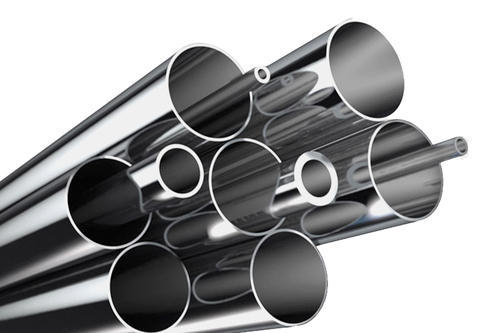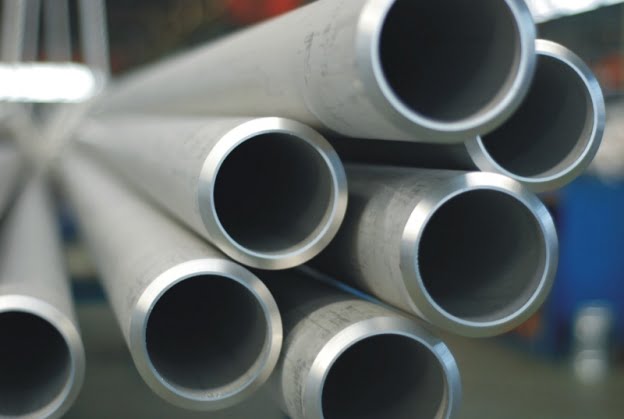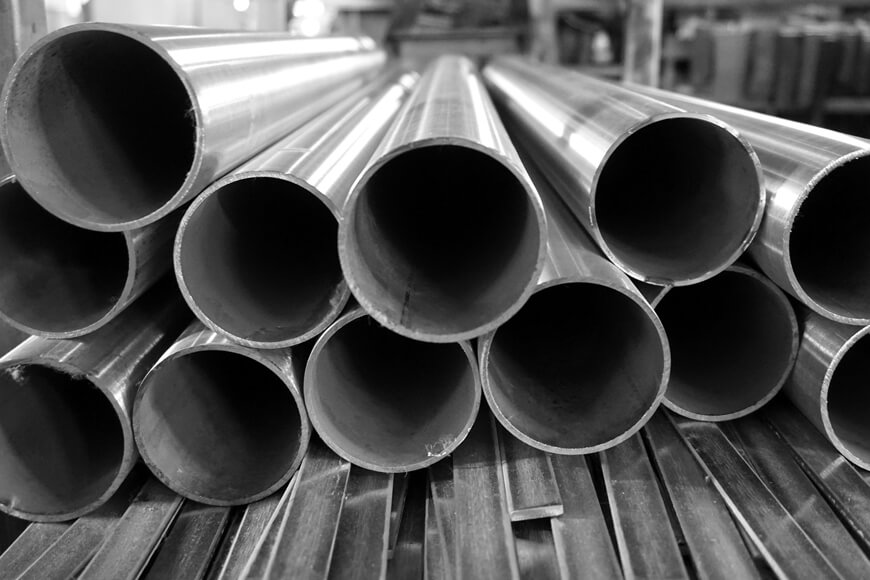
Classification of stainless steel pipes
1. Classification by production method: seamless pipe - cold drawn pipe, extruded pipe, cold rolled pipe. Welded pipe: (a) Classification by process - gas shielded welded pipe, arc welded pipe, electric resistance welded pipe (high frequency, low frequency). (b) According to the welding seam - straight seam welded pipe, spiral welded pipe.
2. According to the shape of the section: round steel pipe; rectangular pipe.
3. Classification by wall thickness: thin-walled steel pipe, thick-walled steel pipe
4. Classification by use: Civil pipes: round pipes, rectangular pipes, flower pipes, generally used for decoration, construction, structure, etc.;
Industrial pipes: steel pipes for industrial piping, steel pipes for general piping (drinking water pipes), mechanical structure/fluid conveying pipes, boiler heat exchange pipes, food hygiene pipes, etc. Generally used in various fields of industry such as: petrochemical, paper, nuclear energy, food, beverage, medicine and other industries have higher requirements for fluid media. 
stainless steel pipe material distinction
1. The concept of steel: Steel is a material of various shapes, sizes and properties that we need through pressure processing of steel ingots, billets or steel. Steel is an essential and important material for national construction and the realization of the four modernizations. The materialization of stainless steel pipes is widely used and has a wide variety. According to the different cross-sectional shapes, steel is generally divided into four categories: profiles, plates, pipes and metal products. Organizing the production, ordering and supply of steel, and doing a good job in management, it is divided into heavy rail, light rail, large section steel, medium section steel, small section steel, steel cold-formed section steel, high-quality section steel, wire rod, medium and thick steel plate, thin steel plate, electrician Silicon steel sheet, strip steel, seamless stainless steel pipe, welded stainless steel pipe, metal products and other varieties.
2. Production method of steel: Most of the steel is processed by pressure, and the materialization of the stainless steel tube causes plastic deformation of the processed steel (bill, ingot, etc.). According to the steel processing temperature, steel is divided into two types: cold working and hot working.
The main processing methods of steel are: rolling - a pressure processing method in which the steel metal blank is passed through the gap (various shapes) of a pair of rotating rolls, and the section of the material is reduced and the length is increased due to the compression of the rolls. This is the production of steel. The most common production method is mainly used to produce steel profiles, plates and pipes. Cold-rolled and hot-rolled.
Forged steel: A press working method that uses the reciprocating impact force of a forging hammer or the pressure of a press to change the billet into the shape and size we need. It is generally divided into free forging and die forging.
Drawing steel: It is a processing method that draws rolled metal billets (forms, tubes, products, etc.) through die holes to reduce the cross-section and increase the length. Most of them are used for cold working.
Extrusion: It is a processing method in which the steel is placed in a closed extrusion tube, and pressure is applied at one end to extrude the metal from the specified die hole to obtain a finished product with the same shape and size. It is mostly used for the production of non-ferrous metal materials. .

the use of stainless steel pipes
1. Stainless steel seamless steel pipe: Seamless steel pipe is a long steel with a hollow section and no joints around it.
Manufacturing process and process of seamless steel pipe: smelting > steel ingot > rolling > sawing > peeling > perforation > annealing > pickling > ash > cold drawing > cutting head > pickling > storage
Features of seamless steel pipe: It is not difficult to see from the above process flow. First, the thicker the wall thickness of the product, the more economical and practical it is, and the thinner the wall thickness, the greater its processing cost. Second, the process of the product determines its limitations. Generally, seamless steel pipes have low precision, uneven wall thickness, low brightness inside and outside the pipe, high cost of sizing, and there are pits and black spots on the inside and outside that are not easy to remove. ; Third, its detection and shaping must be processed offline. Therefore, it reflects its superiority in terms of high pressure, high strength, and mechanical structural materials.
2. Welded steel pipe: Welded steel pipe is referred to as welded pipe.
Manufacturing process and process of welded steel pipe: steel plate > slitting > forming > welding > induction bright heat treatment > inner and outer weld bead treatment > shaping > sizing > eddy current testing > laser diameter measurement > pickling > storage
The characteristics of welded steel pipes: From the above process flow, we can easily see that: First, the product is produced continuously online. The thicker the wall thickness, the greater the investment in the unit and welding equipment, and the less economical and practical it is. . The thinner the wall thickness is, the lower its input-output ratio will be; secondly, the process of the product determines its advantages and disadvantages. Generally, the welded steel pipe has high precision, uniform wall thickness, and high brightness inside and outside the pipe (the steel pipe determined by the surface grade of the steel plate). Surface brightness), can be arbitrarily fixed. Therefore, it reflects its economy and aesthetics in high-precision, medium and low pressure fluid applications.


